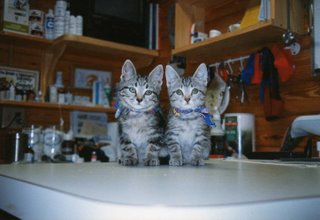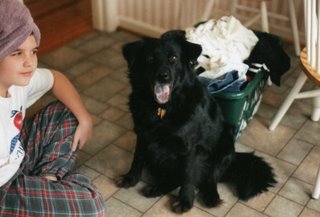Built in 1967 on the "Old Kinsey Dairy Farm," Ellis Maples designed an 18 hole championship course that blends the natural beauty of the surrounding area with a unique and championship layout that still holds up today. Rolling fairways, undulating greens, scenic lakes, winding streams, and strategically placed sand traps are some of the many challenges that you will face during an enjoyable day at Countryside.
| |
Countryside’s 1st hole is visually pleasing to the eye. You get a good look at the 375- yard hole that’s guarded down the left side by two small fairway bunkers. Some trees protect the right side of this generous fairway. If you drive the ball a little too far, a large oak tree may block you out. A short iron is all you will need into this funneling green. Play to the center of the green or else you may end up in one of the bunkers. A birdie is a real possibility to start your round. |
A birdie is a real possibility to start your round. That’s really only half the story. In many ways the par four first hole at Countryside is about the easiest on the course as long as you can drive the ball straight. With any deviation from straight, you will find yourself in big trouble.
Early on, I made a living out of visiting the right side of the fairway. When you stand on the tee, you are faced with a beautiful, generous fairway way off in the straight distance. However, between here and there, a large, spreading sycamore tree guards the area. Without fail, in a group of four playing with me, someone would become intimidated by the Pebble Beach-like audience at the tee and duff their ball into the tall grass short of the big tree. Others would challenge the tree and lose. The tree was famous for slapping the ball back into your face. Still others would defeat the tree head on only to find that their ball had disappeared into the mundane tall grasses in the right rough or worse yet into the Olympic-sized pool guarding the right out-of-bounds. Clever strikers would know to push left of the tree, but that course would also lead to massive sand trap disaster.
If by some luck, you could make it past the tree and find your ball clear of traps, a birdie was a real possibility. However, you still had to deal with the annoying green guarding traps. Again, Maples rewarded a straight shot. Bumping and running the ball up was a smart play. Lofting and spinning the ball back to the pin was the sexy play. The green, however, played longer that it looked and was terraced making ball position in relation to the pin very important.
#2 is a dogleg right 524-yard par five that can play much shorter than its actual yardage. This can cause a dilemma of sorts for the longer players. You now have to choose whether to go for this semi-island green in two or to lay up short and leave yourself a short wedge into a fairly small green that slopes from the back to the front. Once again, a real birdie possibility to start your round. |
Cross the road and visit the second hole. This hole has evolved over the years from a wild wallop-fest to a more exact target shoot. Still the basic premise for success prevailed through the years. A Par Five, the first shot looks a bit innocent. However first time players would be wise to talk with experienced duffers about first shot strategies. Being a dog-leg right, some would recommend gunning their initial drive over the mounded fairway bunker. That’s just what Ellis would have wanted you to do. Stalking close to the bunker is a fairway parallel out-of-bounds line running the length of the narrow right rough. Making a mistake on the drive meant losing a ball or busting an apartment window. Uninitiated safe drivers may pace their ball somewhere in the acres left of the fairway bunker. While safe and secure, positioning the ball in that spot almost guaranteed the golfer a bogey simply due to distance. Some long ball hitters were even further penalized by driving left and long. In recent years, the out-of bounds marker on the left has come into play as the Trane company has build a warehouse right on the OB marker. Any massive drive from a Big Bertha down the left side flirted with steel.
The second shot on this hole is really the picture shot on the course. In fact during drought years with water being rationed in the valley, this stretch of fairway was the only fairway irrigated, because it presented such a beautiful snapshot to drivers on nearby Interstate 581. It’s rather humorous that the official description claims that this shot is shorter than its actual yardage. In reality, the second shot plays longer than it looks. The reason is because just short of the almost island green, the land slopes gradually downward from quite an elevation and then back up. The optical illusion created is one of closeness while the distance is masked by the hollow. Ellis Maples used this same illusion with even greater success on the twelfth hole on the course.
Lurking to the right of the green used to be a small, but beautiful, lake. This lake was the home of all kinds of aquatic life from bass to evil snapping turtles. Of late, the lake has filled with sediment, sludge, and interstate trash and debris. The green itself was a fair surface with a slight tilt toward the fairway. It was always important to never go long past the green for a slimy, algae –filled creek lurked immediately behind down a steep slope.
| |
#3 is the 1st of five Par 3’s on the course. This 162-yard tee shot plays uphill and usually into the wind. You must take at least one extra club so that you don’t end up short and in the bunker that guards the left side of this left to right sloping green. |
Fears. This annoying little hole, perhaps the most unattractive on the course played to all of my fears: uphill, wind, water, proximity to previous green, and fast moving honking cars. This hole used to be a bit different when it was originally designed. I remember the tee being farther from the hole, but sometime in the 80’s wise road builders decided that the tee box would be better suited as part of the continuation of the frontage road. These wise builders were wowed by the seductive industrial offer for the property next door, and knew they had to provide clear frontage access between Hershberger and Peter’s Creek Roads. Since the original frontage road stopped just west of the third hole, these savvy developers pushed for the expansion. In a cruel twist of fate for these city developers, the main industry coaxed onto this prime industrial property, Innotech-makers of specialized contact lenses developed by Roanoke’s own Drs.Blum ‘n Newman, who promised thousands of Roanoke City jobs and loads of tax money for the city coffers, was sold first to Johnson and Johnson and then to some French company. Innotech was a company in search of a product and never really made a dent in the competitive contact lens market. Now, their beautiful flagship, a state-of-the-art building sits abandoned beside the repositioned #3 tee box.
Back to the hole, when the tee box had to be moved, the only solution was to move it closer to the number 2 green. Knowing how I play golf, I was always afraid that some golf hack like me would peg me on the tee box as he overshot the number two green. Hence, I was never comfortable on this new box.
This hole scared me from the time I was a pup. My father would sometimes let me play this hole when I walked a round with him. I always disappointed. Pressured by close followers and staring at a slow moving deep ditch creek within 20 yards of the box, I invariably duffed my first attempt into the creek. Feeling that I needed to hurry, I would quickly squander my second attempt off the tee. From there, my goal was to cross the creek and then burn my way to the top of the hill to the sloping green.
As I got older and better, the creek had less effect on me, but I became intimidated by the rushing interstate traffic and by the evil hill and facing wind. I found that I could never quite judge the distance right. When the wind seemed gentle on the box, it was a gale on the green, always in your face. If by chance the day was calm, my patterned memory always caused me to explore Trane Manufacturing’s office yard beyond.
Some people cursed this green. It was no doubt challenging because it sloped greatly from side to side and was especially hard to grip on the front and right sides. Unless you were able to get the ball pin high, you ran the risk of visiting the hill again. Luckily, I was usually playing from the edge of the green anyway and was usually able to place my shot closer to the pin. Beauty and charm: this hole had none. Annoyances: this hole had plenty.
The 380 yard 4th favors a little cut shot off the tee. Push your tee shot too far right and you will be out of bounds. If you go too far left, you will be in Ike’s Creek. A well-struck driver or 3-wood will set you up with a short or mid-iron into one of the biggest greens on the course. |
Perhaps this is the most beautiful hole on the course. The fairways widen from the narrow chute at the tee box area. What the official description fails to mention are two of the most interesting features affecting the course, creeks and a road.
The course was served by one main creek, Ike’s Creek, that snaked its way through the course. Maples used it on many holes. On the fourth, he had the creek flow towards the golfer at the tee box. Generally the creek would be out of play except for fearful short right-hand hooks. Then creek crossed under the cart path just in front of the teebox and was joined by another creek, dry in summer, which ran parallel to the right fairway. Then the happy creek went on its merry way to mess with my dreams on number three and to fill the lake on number two. Creeks and ditches are always places to definitely have your ball avoid.
Aside from the amazing creek, roads definitely came into play here for some people. My brother, Jody, is most famous in my family for his performance on this hole. Jody was always a powerful striker of the ball back in his youth. He could crush a drive using the family’s vintage MacGregor driver. However, he was also known for mammoth slices. When Jody played this hole, his stroke became a potential lethal weapon. Holes three, four, five, and six 9to some extent) parallel a frontage road and Interstate 581. Number four is the closest in proximity to the Interstate, so when Jody powered off the tee, his blast frequently flirted with the six lanes of traffic moving at 60+ miles per hour. I once watched as he nailed a massive slice off the tee and his ball bounced in the first lane of southbound traffic, bounced high into the air, then bounced in the middle of northbound traffic before disappearing across the road somewhere near the airport runway.
The green on this hole was the most beautiful on the course. It was very possible to run the ball in close to the pin, but even if you missed the approach and landed somewhere else on this large green, it was reasonably possible to drain a long putt. With the green flanked by beautifil white pines, standing there offered a real sense of peace. A greater experience is standing there as a 737 landed. After the jet passed just a hundred feet above your head, a massive jet wash-a strong hot wind, blew across you. It was oddly refreshing for all of your senses.
The slightly downhill 400 yard 5th favors a little draw off the tee. Once again, if you push your tee shot too far right, you will be out of bounds. If you go too far left, you will have to deal with some trees. Here again, accuracy is the key, so you may want to hit a 3-wood for control. This will leave you with a mid-iron into another large green. Make sure to favor the right side of the green due to the bunker that guards the left. |
First of all, this hole offered relief for the typical golfer. As you left the fourth green, you came to a water cooler filled with crisp, cool drink. Planted in a shady spot, this tee box was a great relief on a hot day. The fact that a stand of woods flanked the interstate side of the driving area, it also offered the first chance of other more pressing kids of relief. Strange little one paths dive about ten feet into the tangled woods beside the tee box and just stop.
The initial drive on this hole is blind. You really can’t see the green. The object is to place the ball atop the gentle rise just beyond the airport light towers. Perfectly placed, you can be set up for an amazing second shot onto the green. Tracking the flight of your ball as it heads slightly downhill and rolls onto the green is one of the most amazing feelings to have in golf.
If you get wild left, you would find that you were dodging white pines the rest of the way in and would have to approach the green from the evil left side. If you were wild right, then you can have a journey into another world. Seemingly the rough goes on forever before it gives way to the parallel woods. However, the rough tucks into a little forgotten zone a fair ways downstream. Balls go in, but rarely come out of this zone. Some of the greatest shots I’ve seen where blasted out of this dead dream zone and flailing blindly for green safety, escaping from the doldrums of the waving grass.
#6 is the second Par 3 on the front side. At 163 yards, this hole plays a bit shorter due to its downhill elevation change. Ike’s Creek runs along the front and right hand side of the green. Make sure to take enough club into this pie shaped green. |
The sixth hole harbors one of the saddest stories at Countryside. When this championship course was first built in the late 1960’s, the sixth hole was a proud postcard. An elevated tee looking down upon a green guarded by a beautiful lake is what greeted the golfer. It wasn’t until I found a way to cross that lake that I felt I had gained acceptance into manhood. My brother, Greg, received his first birdie on this lake hole. He blasted off, but landed short right onto the frozen lake. His ball bounced high and skittered onto the green a few feet away and pin high. Nervously, he sank the birdie putt.
Somewhere, somebody at Countryside decided to drain that beautiful lake.
Still coming soon: Diving for Balls




















